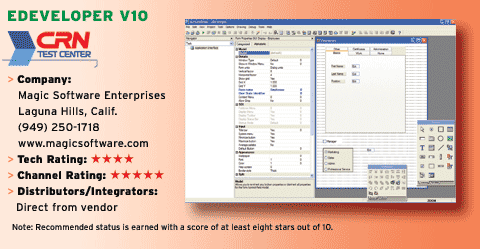Project Managers' Jobs Just Got Easier With eProject PPM6
PPM6's user interface (UI) now is fully customizable with tab-based dashboards. These controllable views allow administrators and project managers to easily separate tabs by roles and usability, respectively. Users can add and remove tabs at any point, allowing every user to have a personalized tab structure.
In addition to creating different project types, a new tab called Projects lists all of a user's active projects. Since every user's first place of navigation is a project engagement, this tab provides top-level framework for all custom views inside PPM6. These views serve a cleverly designed dual purposeinteractive UIs as well as project management reports. The views can maintain the same format in print. EProject allows users to create as many views as they want at no extra cost.
New views are created using a simple wizard that provides fine-grained field configurations, allowing project managers to pick and choose from a variety of key PPM indicators such as planning dates, costs, statuses and projects listed by strategic alignments, which are essentially higher-level groupings. Like report-writing designers, PPM6's project groups make searching easier and provide a better way to categorize projects.
By grouping fields in one view, PPM6 also can generate other views when starting projects. It automatically creates subgroupings whenever projects are implemented, so project managers can easily see (within a single view) projects based at different phases. Additionally, eProject provides field sorting so that projects can be viewed in any hierarchical formsuch as date of project submission, costs or schedules. Project managers also can add filters to fields to generate more compact views.
PPM6 has formalized the project request life cycle so that department managers can make direct requests through the system. Once a user makes a request, a form is generated that spells out all the steps that a new project needs to execute, including all the detail information of expectations. Project request forms also are configurable.
After project requests are generated, PPM6's workflow determines what to do with each request. PPM6's workflows are rules-based and are highly customizable as well, allowing administrators to automatically trigger new projects or pass the existing projects to subject matter experts or executives, so they can estimate resources and expenses.
A new feature, the Resource Manager, takes away the guesswork when capacity planning, so project managers do not have to rely on tools such as Microsoft Excel to estimate costs. Resource Manager uses Ajax technology to cleverly provide all key features that project managers are accustomed to using in Excel, without having to actually execute Excel. Each of the fields act like spreadsheets and have Excel-like behaviors and functionsyet all are part of eProject's server engine.
The new resource feature combines resource requirements, project schedules and costs into a single view, making the transition process between project phases work seamlessly. Moreover, project managers no longer have to manually balance resources with multiple projects.
EProject's new partner strategy allows solution providers to develop services around new Enterprise Templates, which are based on customized views of PPM6.
The company offers a three-tier channel program for VARs and also offers additional partner incentives for referrals and solutions projects. Partner levels are determined by annual sales volumes and all tiers have similar benefits, including sales training, product training and certification, sales support, demo license access and update support. Most partners will garner additional revenue from services associated with the product. Partners are required to complete all Web-based training coursework. Initial channel partner startup costs run approximately $10,000 for all tiers of partners.
In lieu of training and startup fees, partners can join via the referral program, where those aforementioned requirements are eliminated. Referral partners, however, operate solely on a commission basis.
All VAR partners can expect additional revenue in the form of a commission on monthly licensing fees, which can be as much as 30 percent. User licensing fees run $45 per seat.
